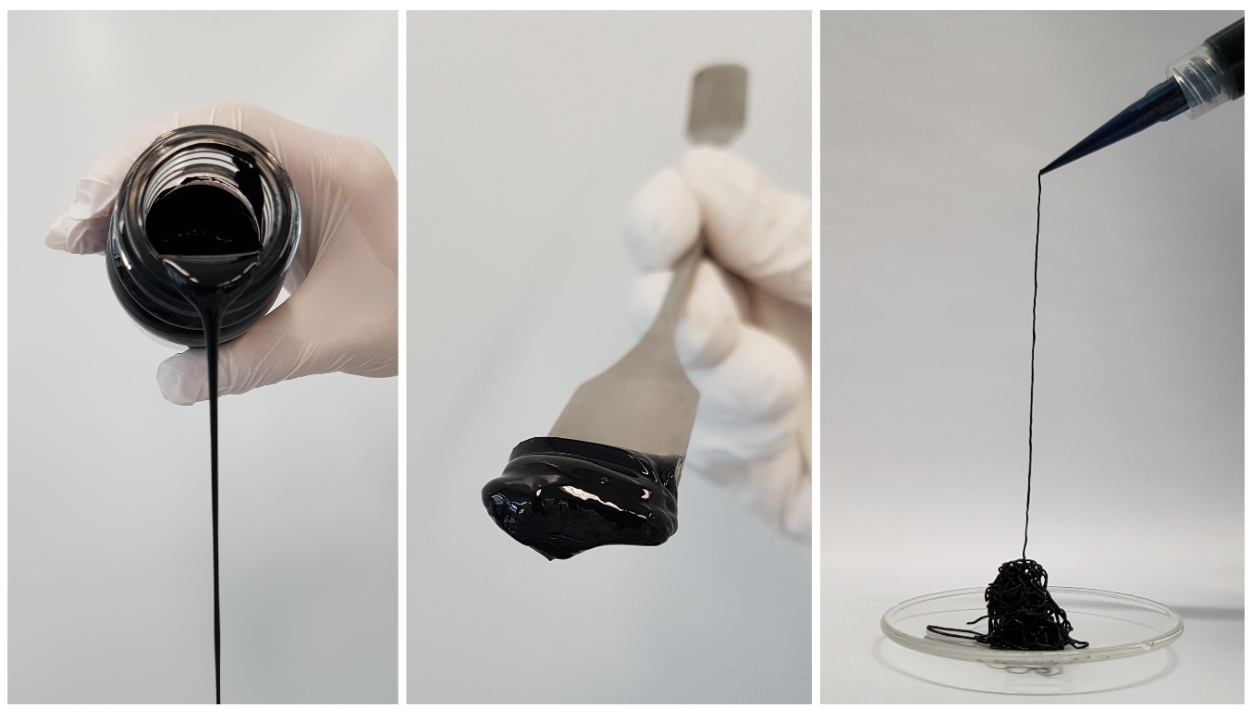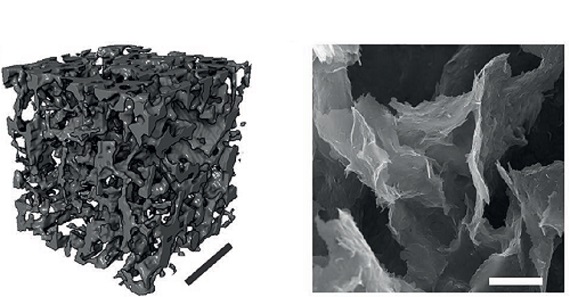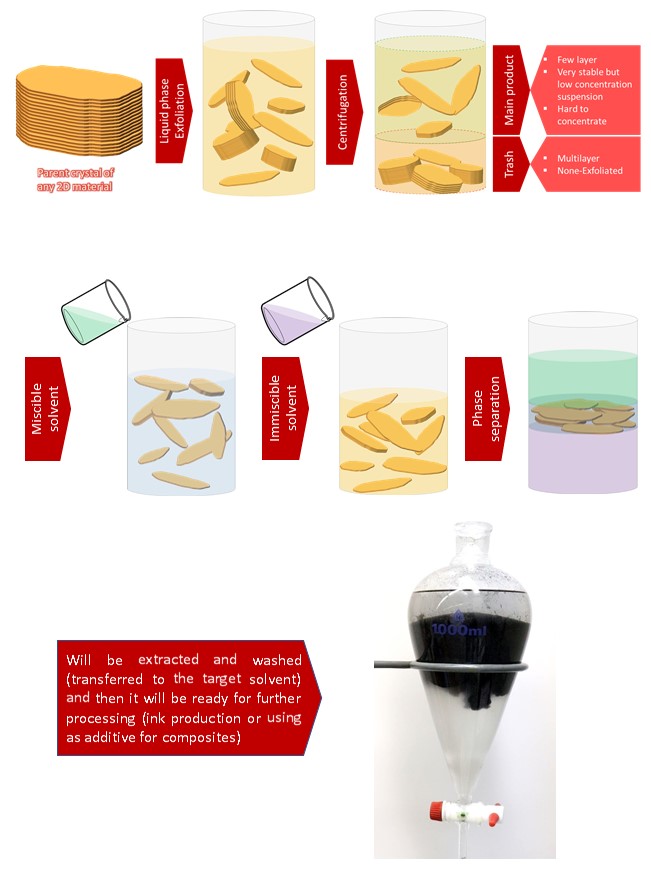Synthesis and Printing of 2D Materials
The increasing demand for electronic devices driven by the Internet-of-Things (IoT), environmental and health monitoring, radio-frequency indentification tags and antennas for tracking have propelled research in the field of printed electronics. A promising class of materials are the 2D materials, on one side, these single or few layer nanomaterials can be exfoliated in solution from their parent crystals, which makes them an ideal candidate to formulate them as ink which can be applied via printing and coating techniques. On the other side, a large number of 2D materials with exciting electro-optical properties have been discovered. The most common 2D material is graphene and its derivatives, followed by the transition matel dichalcogenides (TMDs), transition metal oxides/hydroxides, transition metal carbides/nitrides (MXenes), and 2D metal-organic frameworks.
Our research:
The increasing We formulated inks from numerous 2D materials including graphene, and transition metal dichalcogenides, (MoS2, WS2,MoSe2, MoTe2). Printed 2D materials based devices include transistors, supercapacitors, and sensors for realizing accessible and affordable healthcare.

Additive-free functional inks for room-temperature fabrication of electronics
Conventional inks contain enormous amounts of additives such as binders and surfactant, which drastically degrade the electronic properties of the functional materials. To remove the additives and recover the electronic properties, high-temperature post-treatments (>300°C) are required, limiting the choice of materials (e.g., no heat sensitive material). Furthermore, conventional 2D material inks (e.g., graphene inks) are usually produced using hazardous solvents (e.g., NMP) and have low solid contents that complicates the fabrication process and increases the production cost/time. We developed a simple yet efficient method for processing pristine 2D materials into additive-free high-solid-content inks with diverse rheological properties for various printing and coating methods.

The inks are based on percolated 3D networks of 2D materials (e.g., graphene) in which a solvent is dispersed. Inks based on this novel concept show high colloidal stability, exhibit exceptional adhesion to a wide range of substrates, and are producible using almost any solvent (including green solvents).

Synthesis of a deep metastable emulsion of 2D materials
Additive-free 2D materials inks can be produced on kg scale with low cost and can have vast applications in printing of electronics or fabrication of functional devices.


References:
[1] S. Abdolhosseinzadeh et al., Additive Free MXene Sediment Inks for Screen‐Printed Micro-Supercapacitors. Adv. Mater. 2020, 2000716, https://doi.org/10.1002/adma.202000716
[2] S. Abdolhosseinzadeh et al., Coating Porous MXene Films with Tunable Porosity for High-Performance Solid-State Supercapacitors, ChemElectroChem 2021, 8, 1911, https://doi.org/10.1002/celc.202100558
[3] C. Zhang et al.,Two‐dimensional MXenes for lithium‐sulfur batteries. InfoMat, 2020, 1, https://doi.org/10.1002/inf2.12080
[4] Homogeneous emulsions and suspensions of 2-dimensional materials, Patent publication EP3848420A1
[5] S. Abdolhosseinzadeh et al., A Universal Approach for Room-temperature Printing and Coating of Two-dimensional Materials, Advanced Materials 2021, 2103660, https://doi.org/10.1002/adma.202103660
[6] Z. Zeng et al. Nanocellulose-MXene Biomimetic Aerogels with Orientation-Tunable Electromagnetic Interference Shielding Performance. Advanced Science, 2020, 2000979, https://doi.org/10.1002/advs.202000979
-
Share
